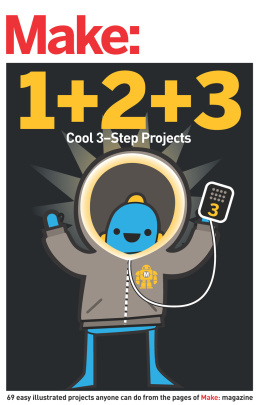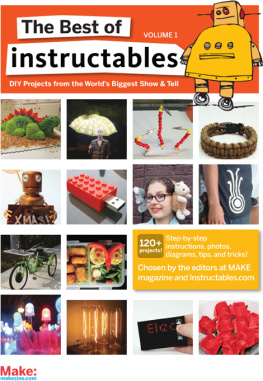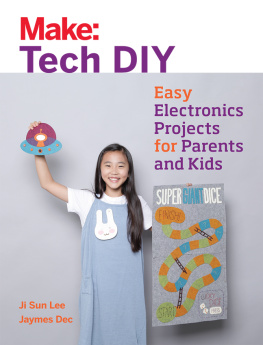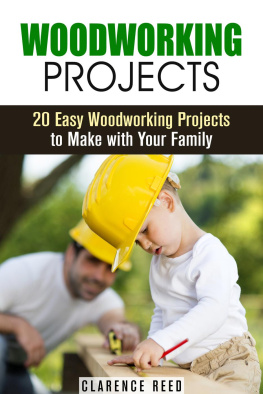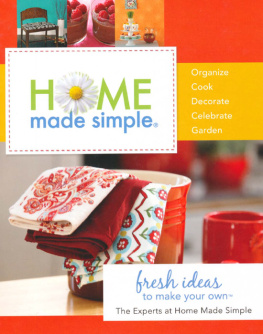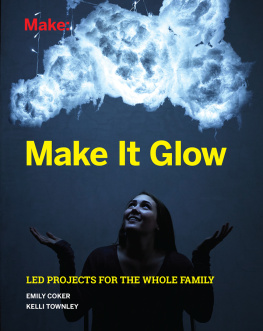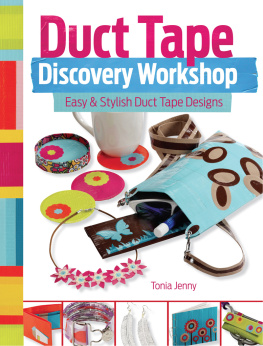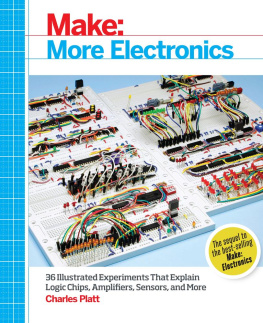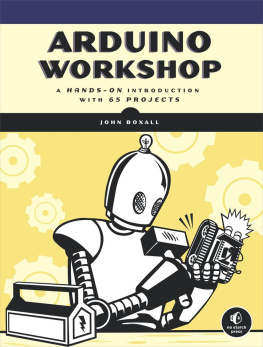
From the Pages of Make:
Easy 1+2+3 Projects
By the Editors of Make:
Copyright 2015 Maker Media, Inc. All rights reserved.
Printed in Canada.
Published by Maker Media, Inc.,
1160 Battery Street East, Suite 125,
San Francisco, California 94111
Maker Media books may be purchased for educational, business, or sales promotional use. Online editions are also available for most titles (.
Publisher: Brian Jepson
Editor: Roger Stewart
Production Editor: Happenstance Type-O-Rama
Proofreader: Happenstance Type-O-Rama
Interior Production: Cody Gates & Kate Kaminski, Happenstance Type-O-Rama
Cover Designer: Brian Jepson
November 2015: First Edition
Revision History for the First Edition
2015-11-15: First Release
See http://oreilly.com/catalog/errata.csp?isbn=9781457186899 for release details.
Make:, Maker Shed, and Maker Faire are registered trademarks of Maker Media, Inc. The Maker Media logo is a trademark of Maker Media, Inc.
Many of the designations used by manufacturers and sellers to distinguish their products are claimed as trademarks. All trademarked and copyrighted products mentioned in the text are the property of their respective owners, and Maker Media, Inc., makes no claims of ownership by mentioning the products that hold these marks.
While the publisher and the author have used good faith efforts to ensure that the information and instructions contained in this work are accurate, the publisher and the author disclaim all responsibility for errors or omissions, including without limitation responsibility for damages resulting from the use of or reliance on this work. Use of the information and instructions contained in this work is at your own risk. If any code samples or other technology this work contains or describes is subject to open source licenses or the intellectual property rights of others, it is your responsibility to ensure that your use thereof complies with such licenses and/or rights.
978-1-68045-044-6
[TCP]
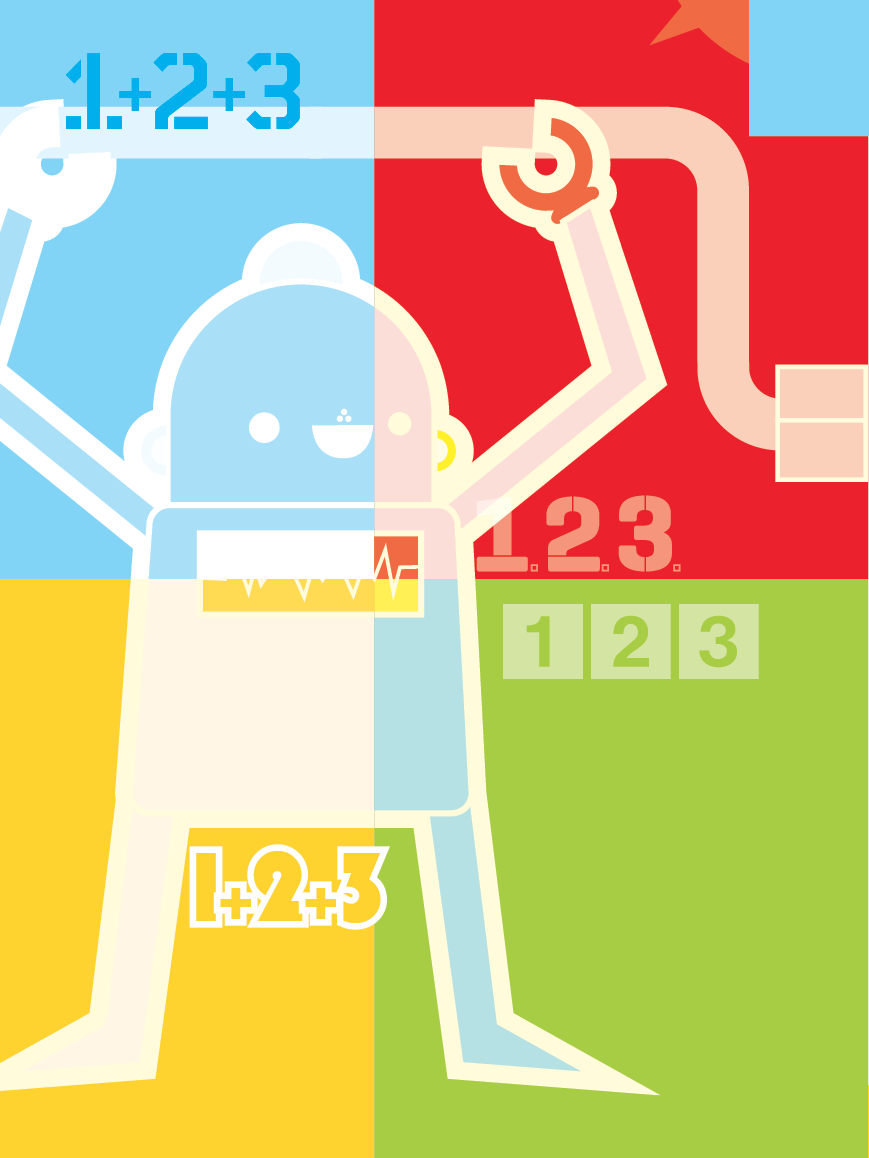
Preface
1+2+3 has been a regular feature of Make: magazine since its earliest days.
As the name implies, the projects are all as easy as 1, 2, 3. Each project is explained with a handful of easy-to-follow, step-by-step instructions and simple, clear illustrations.
In the pages that follow, youll find projects that are fun, artistic, useful, and educational. Most are perfect rainy-day activities that you can do with kids. Parents and educators will find lots of suitable home and classroom activities. A handful of the projects may call for garage workshop tools such as a saw or a drill, but many require nothing more than scissors and tape.
Its easy to follow along and re-create the projects just as the authors have presented them. But, of course, you can also use them as springboards for your own ideas, mods, and hacks.
Let your creativity flow! 
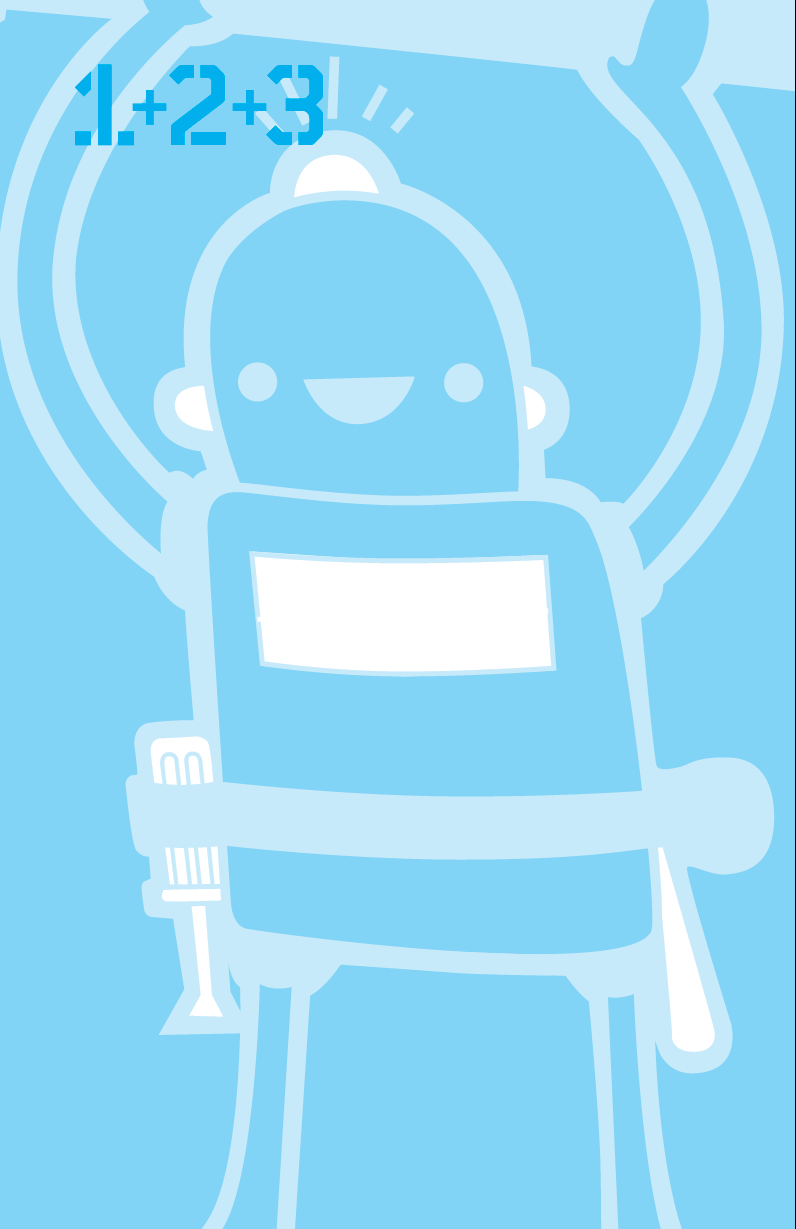
Part I: Toys and Games
Young Imaginations get their greatest workouts from toys and games that they make themselves or with a little help from parents and educators. The simple but sturdy design of Ed Lewiss Fast Toy Wood Car is a great example. You can make it with a few basic workshop tools and inexpensive materials; and its a perfect platform for putting imaginations to work on new designs and modifications.
Paul Rawlinson explains how to make a working miniature canon using party poppers. Gus Dassios provides instructions for a different kind of popperone that will liven up your next board game. A design engineer by profession, Gus says, When Im not sleeping (and even then sometimes), Im always thinking of the next thing I want to make.
Edwin Wise is a master of Halloween props and scares. His startle-inducing Boom Stick is reprinted in The Best of Make: Volume 2. In Ping-Ponger, Edwin shows you how to make something a little less scary but still full of potential surprises.
Julie Finn says her children are the inspiration behind most of her Maker projects. Julies Custom Memory Game is a great way to challenge young minds. Check out her blog posts online at Crafting a Green World for more great ideas for kids.
Ben Wendt, a lifelong tinkerer, has also been inspired by his kids to take his Maker projects on further explorations. You may be inspired by his Remote-Controlled Camera Mount project to make a Hales Tour of your own neighborhood.
Ian Gonsher is an artist, designer, and educator on the faculty in the school of engineering at Brown University. His Coffee Shop Construction Toy demonstrates how to enlist simple everyday objects as design tools. George W. Hart is research professor in the engineering school at Stony Brook University, as well as a freelance mathematical sculptor and designer. His Two-Cent Wobbler (aka two-circle roller) is addictively fun to watch roll down an incline, but for the mathematically minded it also demonstrates some important principles.
Along with his his wife, Hazuki Kataoka, David Battino writes and performs Japanese storytelling books for children. Watching sword fighters at a Japanese cultural festival inspired him to create the Safe Bamboo Swords project.
Brian McNamara (Alien Projector) makes small synthesizers, loopers, and various noise- and image-makers. An article in Make: encouraged him to start selling his creations on Etsy. A Make: editor subsequently saw his R-Tronic sequencer on Etsy and asked him to write about it for the magazine. Thus the circle was complete!
These and many more DIY projects are waiting for you in the pages that follow. Its time to get started making... and having fun! 
Fast Toy Wood Car
By Ed Lewis Illustrations by Julie West
You will need
Plywood ", 11"14" or more
Bolts , 4" (2)
Locknuts " (2)
Spacers " (4)
Inline skate wheels with bearings (4)
Wood glue
Laser cutter or jigsaw, router, or coping saw, and drill with " bit
Clamps
Cutting templates
Lots of my friends have kids, and that means lots of birthdays. I wanted to have a custom present thats easy to make and has lots of room to play, in terms of design. A toy car fits perfectly. So I can build cars and make kids happy? Win-win!
Cut the plywood.
Download the templates from makezine.com/projects/make-32/fast-toy-wood-car/ and use them to cut the plywood body. Use a laser cutter, or cut with hand or power tools. Sand edges.

Assemble.
Run each bolt through a wheel, a spacer, the car body, another spacer, another wheel, and a locknut to cap it off. (Remove the wheel's internal spacer if necessary.) The car is ready to roll! If you want, change a layer or two, or even redesign the whole thing.
Next page
